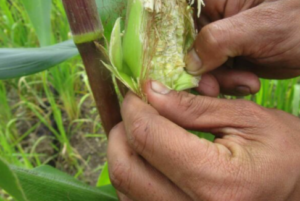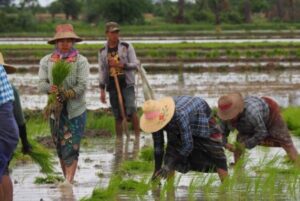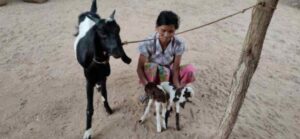IIRR Myanmar recently released the final report for their Climate Smart Village (CSV) program. Taking principles from climate smart agriculture, the three-year project aimed to strengthen the resilience of Myanmar’s smallholder farmers through community-based adaptation in agriculture. CSVs were established in four villages in Myanmar, with IIRR working in tandem with the Consultative Group for International Agricultural Research (CGIAR) as part of the latter’s Climate Change, Agriculture, and Food Security (CCAFS) initiative. CSVs draw principles and innovations from climate smart agriculture (CSA) and put them to work on a local scale, with multiple stakeholders involved, rather than just individual activities.
This project saw four CSVs established, in villages across geographically diverse areas of Myanmar: Htee Pu, Kyaung Taung, Ma Sein, and Saktha. This latest research paper documents the results of the project, which had three initial goals. First, to enact and experiment with the CSV approach within Myanmar, testing how community-based adaptation occurred in order to optimise and fine-tune the CSV model. Second, to build social learning processes, enabling the CSV approach to produce co-benefits in the areas of gender equity, food security, and nutrition. Third, to strengthen capacity to scale-up the CSV’s social and technological methods, as appropriate for governments, civil societies, and academic institutions. To read more about CSVs as a model see here.
The portfolio CSV approach
The paper emphasizes how differing land tenure, poverty levels, and specific climate risks/vulnerabilities all influence how the CSV approach is enacted in each village. For example, secure tenure status gives landowners freedom to make decisions about land-use and farmers are more likely to engage in diversified ventures, combining short-term production and long-term adaptation related production practices.

In another example, villages with higher poverty levels have reduced capacity to adopt key methods such as crop production diversification or climate resilient crop selection, plus they are less able to invest in new ways to adapt to emerging climate risks. However, the paper also noted that the wealthier a village, the less interest and willingness there was to adopt labour intensive CSA options such as intercropping. The authors conclude that a ‘portfolio approach’ is therefore key: this entails constructing a list of options to households, allowing them to pick and choose which points they are able and willing to implement. Certain options are angled at women too, for example raising small livestock within homesteads if women are not allowed to own farm lands.
Social learning processes
The project focussed on social learning mechanisms, such as farmers’ field days where farmers visit other farms, villages, home gardens, and school gardens, to give feedback and opinions, or national learning events from NGOs and academics.
This paper highlights how these social learning events enabled the CSV approach to produce co-benefits, as key messages on gender and nutrition could be integrated. The IIRR’s analysis showed that when households engaged in CSV adaptation options and social learning events, men’s perceptions towards women’s engagement in economic and livelihood activities was improved, whilst women’s perception that they do not have to be dependent on men for money to cover personal needs increased. Finally, households implementing adaptation options had a more positive view about the importance of preparing nutritious food and prioritising sanitation.
Scaling-up
The paper noted that whilst the government adopted the Myanmar Climate Smart Agriculture Strategy (MCSAS) in 2016, there is still a way to go in terms of getting all the national stakeholders on board in order to implement wide-scape adoption of CSA in Myanmar.

Furthermore, there is a need for reforms in the government agriculture extension system, the bolstering of technical expertise, and extra materials and financial investments to allow MCSAS to reach more farmers.
Read the full publication here.




